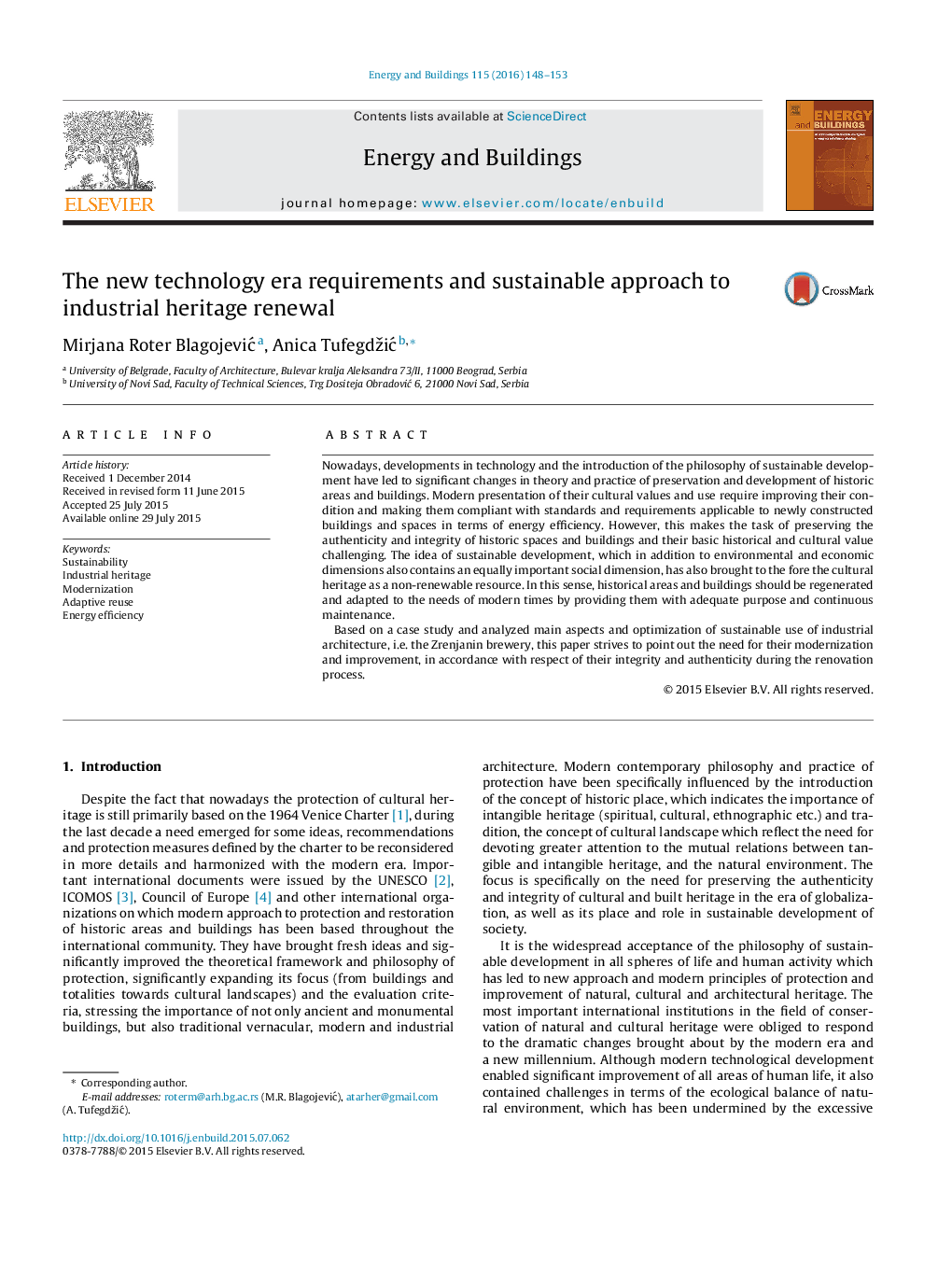| Article ID | Journal | Published Year | Pages | File Type |
|---|---|---|---|---|
| 262251 | Energy and Buildings | 2016 | 6 Pages |
•Adaptive reuse is an effective method of built heritage energy improvement.•Energy efficiency construction measures reduce maintenance and operating costs.•Thermal insulation of buildings can reduce energy costs for heating up to 70%.•Reused industrial heritage generates sustainable social and urban development.
Nowadays, developments in technology and the introduction of the philosophy of sustainable development have led to significant changes in theory and practice of preservation and development of historic areas and buildings. Modern presentation of their cultural values and use require improving their condition and making them compliant with standards and requirements applicable to newly constructed buildings and spaces in terms of energy efficiency. However, this makes the task of preserving the authenticity and integrity of historic spaces and buildings and their basic historical and cultural value challenging. The idea of sustainable development, which in addition to environmental and economic dimensions also contains an equally important social dimension, has also brought to the fore the cultural heritage as a non-renewable resource. In this sense, historical areas and buildings should be regenerated and adapted to the needs of modern times by providing them with adequate purpose and continuous maintenance.Based on a case study and analyzed main aspects and optimization of sustainable use of industrial architecture, i.e. the Zrenjanin brewery, this paper strives to point out the need for their modernization and improvement, in accordance with respect of their integrity and authenticity during the renovation process.
